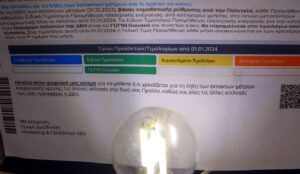The second quarter is shaping up as another strong quarter for Greek banks according to a report by UBS, which analyzed banking sector data from the Bank of Greece for May 2025. As noted in its net interest income (NII) tracker for European banks, the second quarter appears stable with no major surprises expected, supported by positive momentum from deposits and a balanced outlook on interest margins.
Read: Global wealth growth accelerated in 2024: 1,000 new millionaires every day – Greece’s position
Similarly for Greek banks, UBS expects another strong quarter, supported by continued robust corporate lending growth (+14.1% year-on-year), while total credit expansion to the private sector stands at 6.8% annually – the highest rate in Europe (compared to the eurozone average of 1.7%). Finally, UBS sees room for Greek banks to upgrade their business plans for 2025 based on these strong credit trends.
Specifically, Greek banks maintain a significant advantage in net interest income (NII) thanks to the stability of deposit costs. Deposit costs remained low in May at 0.38%, while lending rates stood at 4.95%. The spread remains among the highest in Europe, boosting banks’ operational profitability. The stability of the deposit mix – with demand deposits representing 75.3% of the total – continues to support this dynamic.
Despite the significant rise in bank stocks this year, valuations remain attractive compared to European peers. The price-to-earnings ratio for 2026 (P/E FY26E) ranges between 7.2x and 7.8x, versus 8.5x for the European average, while the estimated return on tangible equity (ROTE) remains in double digits for all systemic banks. There is room for further risk compression, which could lead to upward revisions of target prices, as already observed in the case of Alpha Bank, UBS comments.




